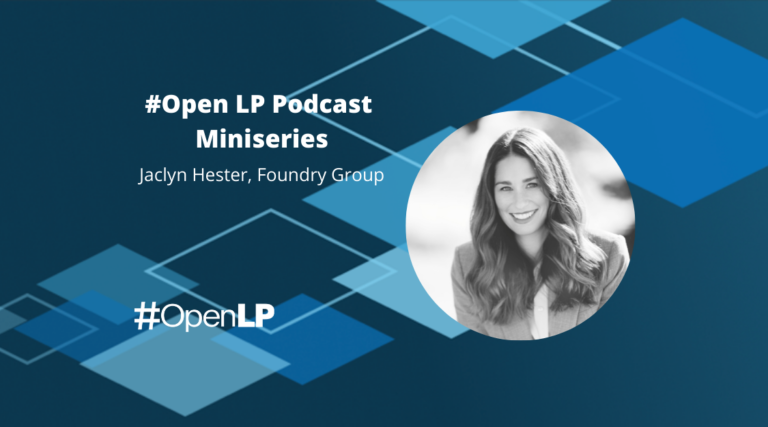This article originally appeared on Sapphire Ventures Perspectives on Jan. 18, 2016.
The Sapphire Partners team backs emerging and established fund managers with deep expertise in enterprise and consumer technologies. As a member of this team I have the pleasure of meeting with hundreds of fund managers who share our excitement for helping early-stage entrepreneurs become global category leaders. During these meetings I often think about what motivates the fund managers, the origins of their firm and how and why the firm was created in the first place. This blog series attempts to answer those questions by offering different perspectives from VC’s on the thoughts and efforts that go into building a successful venture capital firm. In this interview, Sunil Dhaliwal, founder of Amplify Partners, chats about lessons learned from launching a fund.
Recently, I sat down with Sunil Dhaliwal, founder and General Partner of Amplify Partners, to discuss various issues he’s faced in founding and scaling a new venture firm. Amplify closed its second fund in 2015 with $125 million to invest in enterprise infrastructure and data driven applications. It was a step up from the $49.1 million Amplify raised for its inaugural effort in 2013.
The interview below has been edited for length and content.
Q: How did you come up with Amplify’s investment thesis?
A: The genesis of Amplify was a gap in the VC market at the intersection of funds that deeply understood IT infrastructure and funds with the fund size and incentive structure to do early-stage investing. I believed that a highly focused strategy would position Amplify to see the best deals and maximize our entrepreneurs’ chance of success.
At the same time it became clear that most broadly diversified, mid-sized venture firms were not positioned to deliver superior returns to investors. So there was a unique opportunity for a new firm that could serve the need of a specific set of entrepreneurs and limited partners alike.
Q: How did you think about fund structure?
A: I wanted to construct a portfolio with the right number of companies, the right ownership levels, and the right reserves to support our investments over the long term. It didn’t make sense to build a fund of six or seven large positions, just as it didn’t make sense to spread a small amount of capital over forty companies and hope for one to work.
It was a balancing act to figure out the number of portfolio companies, the average investment size and the total fund size that would allow the firm to give each portfolio company the right amount of attention and capital while also making sure we met the diversification and return objectives of our investors.
Q: What is your view on creating the ideal team?
A: There is a big difference between raising a fund and building a firm. I was very clear with LPs that I wanted to build a firm and not just raise a fund. That meant I needed to add team members during our first fund so that LPs and entrepreneurs alike would be confident that Amplify was committed to building a platform.
When thinking about how to grow the firm, I didn’t want to create a firm that tried to be all things to all people, and I didn’t want a firm of lone wolves who just shared office space. I felt strongly that our team needed to share deep domain expertise, an early-stage focus, and have complementary networks of contacts that supported our vision.
Q: What was your strategy in bringing on other investment professionals?
A: I prioritized adding the best talent over hiring for a specific role. While I was always focused on adding a partner during our first fund, that didn’t stop me from hiring a very important team member along the way, David Beyer (Principal at Amplify). David had done over forty angel investments, including one co-investment with Amplify, before joining the team. He added a skillset that was very complementary to mine, as well as an amazing level of credibility among entrepreneurs.
Mike Dauber, (General Partner at Amplify), was someone I had known for a long time. Mike and I worked together in the past and were close friends. Mike was totally bought in to the Amplify vision, so the fit was natural.
Q: What was your go-to-market fundraising strategy?
A: When meeting with LPs early in the life of the firm, I always pointed out five reasons why Amplify might not be a fit for them: Amplify was a first-time fund; I was a sole GP; I was building a concentrated portfolio; I was only investing in IT infrastructure; and I was focused on early-stage investments.
For those still interested, I made clear that I preferred a diversified LP base where no investor was more than 10% of the fund. With a $40 million target fund size, I quickly ruled out LPs who needed large allocations.
Aggressively ruling out investors who didn’t fit allowed me to concentrate my time with groups that were far better qualified, which made for a more efficient fundraising process.
Q: What else did you learn about fundraising?
A: You have to be honest about who you are and how you are perceived when you raise a first-time fund. While some GPs have the reputation, track record, and relationships to pull together a first-time fund with nothing more than slides and story, I didn’t take that risk.
I took the approach of establishing Amplify and showing momentum before approaching prospective LPs. I much preferred being viewed as a firm that was already in business that was out raising a fund, rather than being an individual with a slide deck hoping to get a fund off the ground.
There was no better way to get prospective LPs comfortable than by getting into business and doing real work before asking for meetings with them.
Q: What was the hardest aspect of starting Amplify?
A: I had to move everything forward on my own. Managing the workload of fundraising at the same time as working with the portfolio, finding new investments and setting up the firm was daunting to say the least.
Anyone raising a first-time fund as a sole GP should think long and hard about whether they are up for that challenge.
Q: What has been your greatest lesson since starting Amplify?
A: Venture firms need to stand for something. The simple narrative that ‘we are smart investors who work hard for our companies’ doesn’t cut it anymore.
Successful new firms need to explain what they can do for prospective entrepreneurs, and prospective LPs, that can’t be found elsewhere. If you can’t explain your edge you shouldn’t exist.



